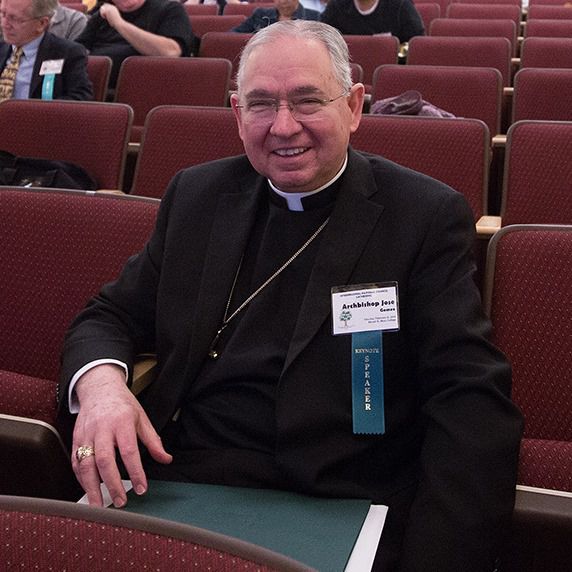Among Archbishop Roger Mahony’s first actions upon being installed as head of the Archdiocese of Los Angeles in 1985 was to implement a new structure for administering what was rapidly becoming the country’s most populous and most complex diocese.
“I knew that Chicago and New York and other places with large populations had regions, or something like that,” Cardinal Mahony told The Tidings in 2011. “I thought we should take a look at what they had.”
He appointed Auxiliary Bishops John Ward and William Levada to lead a task force that examined how best to restructure the three-county archdiocese in a way that strengthened the relationship between the “downtown” church (administrative headquarters) and the “grassroots” church (parishes and people).
Through this work evolved five pastoral regions — Santa Barbara, San Fernando, San Gabriel, San Pedro and Our Lady of the Angels, each headed by an auxiliary bishop based at a regional office and each divided into four geographic deaneries.
By 1987, the structure was in place. Today, each pastoral region serves as many or more Catholics than are found in most U.S. dioceses, and four of the five each serve — by some estimates — close to or more than a million Catholics each, with the fifth not far behind. Collectively, the Archdiocese of Los Angeles counts nearly five million Catholics, close to double that of the Archdiocese of New York, the second largest U.S. diocese.
Following are glimpses of each pastoral region:
rnSANTA BARBARA(Deaneries 1-4, 37 parishes)
Four of California’s 21 missions (in Ventura, Santa Barbara, Lompoc and Solvang) are located in this region, including the last founded by soon-to-be St. Junípero Serra (San Buenaventura). The largest of the five pastoral regions in area and the smallest in population, Santa Barbara (comprised of Ventura and Santa Barbara Counties) also contains the archdiocese’s major seminary (in Camarillo), its most remote inland parish (in New Cuyama, 47 miles from its closest neighbor in Santa Maria) and the parish farthest from the Cathedral of Our Lady of the Angels (in Guadalupe, more than 200 miles from Downtown L.A.).
Episcopal leaders of the region have included Auxiliary Bishops Patrick Ziemann, Thomas Curry and now, Robert Barron.
rnSAN FERNANDO(Deaneries 5-8, 50 parishes)
The region’s Catholic roots can be traced to the founding of Mission San Fernando Rey de Espa√±a in 1797, whose next-door neighbors today include a high school, cemetery and mausoleum, the regional offices and the archdiocesan archival center.
While the San Fernando Valley encompasses the majority of its population and parishes, the region stretches north to the Santa Clarita and Antelope Valleys, and east and south into the Crescenta Valley and the Glendale-L.A. City “triangle” surrounding the 5, 134 and 110 Freeways.
Seven parochial missions are located in the region’s mountains, desert as well as the city. Episcopal leaders of the region have included Auxiliary Bishops Armando Ochoa, Gerald Wilkerson and now, Joseph Brennan.
rnSAN GABRIEL(Deaneries 9-12, 65 parishes)
It has been called “the cradle of the archdiocese,” since it is the home of the fourth mission, San Gabriel Arcangel (founded by Father Serra in 1771) from which 44 settlers trekked nine miles westward in 1781 to establish El Pueblo de Nuestra Se√±ora la Reina de los Angeles de Porci√∫ncula — the City of Los Angeles.
From the San Gabriel Mountains in the north to the Puente Hills on the south, the region stretches from just east of Downtown Los Angeles into the Pomona Valley and the Riverside and San Bernardino County lines, near the archdiocese’s easternmost parish (in Claremont). San Gabriel also includes 14 Catholic high schools, the most of any region. Episcopal leaders of the region have included Auxiliary Bishops Juan Arzube, Gabino Zavala and now, David O’Connell.
rnOUR LADY OF THE ANGELS (Deaneries 13-16, 77 parishes)
The smallest region in area but also the largest in population and number of parishes, Our Lady of the Angels spreads across Los Angeles County’s most affluent and most impoverished neighborhoods. It also embraces many parishes that have long administered to particular nationalities (including Italian, Croatian, Lithuanian, Polish, Hungarian, German, Filipino, Chinese and Japanese) and several Eastern Rite parishes located within the archdiocesan boundary.
Also based here are archdiocesan headquarters — the Archdiocesan Catholic Center on Wilshire Boulevard — and, of course, the cathedral that bears the region’s name, dedicated in 2002 (to replace St. Vibiana Cathedral). Episcopal leaders of the region have included Auxiliary Bishops John Ward, Stephen Blaire and, currently, Edward Clark.
rnSAN PEDRO(Deaneries 7-20, 67 parishes)
The southern portion of the archdiocese includes its only “ocean-bound” parish, St. Catherine of Alexandria on Catalina Island, as well as the historic Dominguez Ranch, site of the first Spanish land grant in California (in 1784, by King Carlos III to Juan Jose Dominguez, a soldier who had accompanied Father Serra).
Although the large majority of parishes in this region were founded before 1960, San Pedro is also home to one of the archdiocese’s youngest parishes (in Cudahy, founded in 1992), and many of its most culturally diverse (notably St. Philomena in Carson). Episcopal leaders of the region have included Auxiliary Bishops Carl Fisher, Joseph Sartoris, Alexander Salazar and, currently, Oscar Solis.

